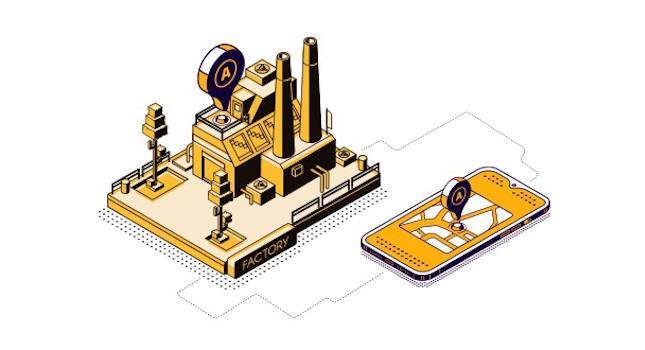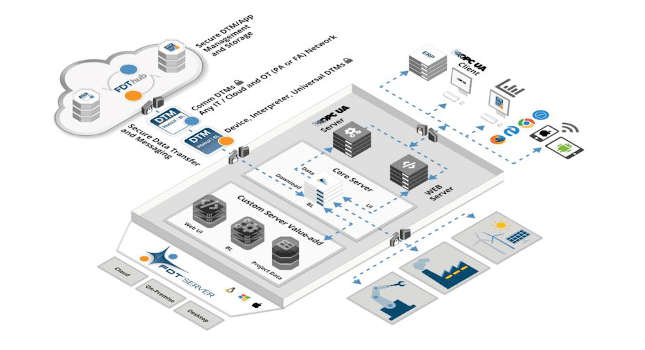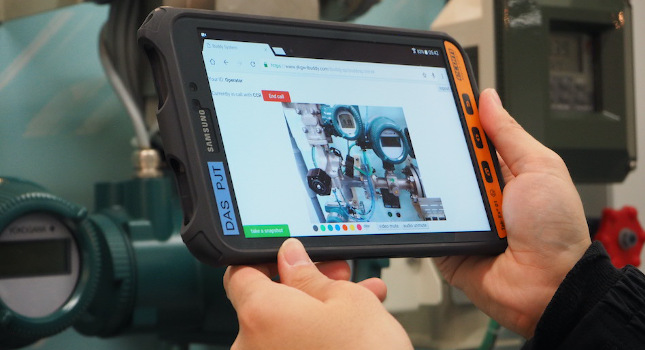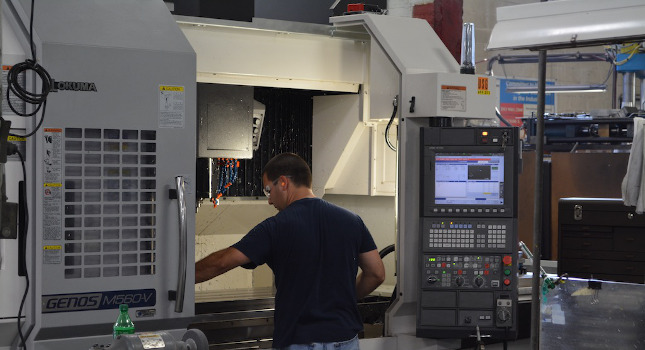Pumps are one of the oldest machines used by man for transporting energy from one form to another. It is not surprising that the there are many designs, resulting in some confusion when generic identification of a specific pump is attempted.
Pumps are one of the oldest machines used by man for transporting energy from one form to another. It is not surprising that the there are many designs, resulting in some confusion when generic identification of a specific pump is attempted.
The simplest way to classify pumps is based on the method used to transmit power to the pumped liquid, mechanical principle behind this energy transfer, and mechanical device for moving fluid. These considerations result in two major pump classes: kinetic (dynamic) and positive displacement (Fig. 1).
Kinetic pumps — mainly centrifugal — develop pressure by radial force, dynamic lift, or momentum change. Energy is continuously imparted to the liquid in centrifugal pumps, resulting in radial, mixed, or axial flow, depending on the impeller design.
Positive displacement pumps discharge a given volume for each stroke of a reciprocating pump or revolution of a rotary pump. Energy is added in intermittent pulses by altering or displacing the confined volume of fluid in one or more cavities (Fig. 2).
Although it is difficult to compare the performance and limitations of various pump designs, common criteria are pressure and flow (Fig. 3). Reciprocating pumps can generate enormous pressure, centrifugal pumps offer practically unlimited capacity, and rotary pumps are in between.
Pumps should operate at or near the best efficiency point (BEP) (Fig. 4). Operation at any other point can cause surges and vibration. These reactions can result in bearing and seal problems, as well as excessive power usage. While published performance curves show smooth operating characteristics from zero to well past BEP, there are pumps that cannot function over these wide ranges.
Viscosity has a pronounced effect on pump performance. Manufacturer’s recommendations should be followed on viscosity limits. Centrifugal pump performance depends on the impeller design. The influence of pump design on how performance varies with viscosity is greater in positive displacement pumps than in centrifugals, which cannot tolerate great variations in viscosity. The general effect on pump performance is gauged by the table on p 83.
Advantages of reciprocating pumps
– Operate with high efficiencies
– Handle varying pressures at a constant speed
– Produce momentary pressure spikes to clear pipeline obstructions
– Are self-priming and not bothered by air entrainment
Advantages of rotary pumps
– Provide continuous delivery with minor pressure fluctuations
– Handle a wide variety of viscosities
– Are self-priming
Advantages of centrifugal pumps
– Run at higher speeds to produce capacity, resulting in smaller sizes and lower costs
– Deliver fluid free from pressure fluctuations
– Operate at minimum flow without exceeding system pressure
– Operate at maximum flow without excessive power
– Designs match various system requirements
– Use simple foundations due to absence of vibration
– Handle various types of slurries consistently
– Can be direct driven
Effect of increasing viscosity on pump performance
Viscosity, SUS
100 250 500 750 1000
Flow reduction, %
3 8 14 19 23
Feet of head reduction, %
2 5 11 14 18
Power increase, %
10 20 30 50 65
Troubleshooting centrifugal pumps
Problem Cause Remedy
Pump not turning Driver not running Check fuses and circuit breakers
Keys sheared Replace
Drive belt slip Check and adjust
Coupling fault Check if slipping or broken; replace if necessary
Shaft or gears sheared Check; replace if necessary
Pump not priming Inlet valve closed Open valve
Inlet clogged or restricted Check and clear
Air leaks on suction side Replace seals; check lines for leaks
Liquid drained or siphoned from system Install check or foot valve to prevent draining
Worn impeller Inspect and replace; increase pump speed;
install foot valve
No discharge Lack of prime, see above Open vent cocks to release trapped air and fill
pump and suction pipe completely with fluid
Excessive suction lift Check pump inlet for clogging; check suction head
Excessive discharge head Check that valves are open; check piping for
blockage; check total head
Speed too low Check pump rpm
Pump clogged Check that impeller is not clogged
Wrong direction of rotation Check for correct rotation
Vapor lock Bleed suction pipe to clear air lock; check
that suction pipe is properly submerged
Relief valve not properly adjusted Check adjustment; check for dirt on valve seat
Air leak Check seals; check lines for air leaks
Low delivery Air leaks Check suction piping and pump for air leaks;
check pump gaskets
Vapor lock Check NPSH and fluid temperature to ensure
liquid in suction line is not flashing
Low NPSH or damage See above, and check suction pipe and foot valve
Clogged strainer Check and clean
Excessive inlet friction Suction line too small or too many fittings
adding fluid friction
Relief valve incorrectly set or jammed Check and adjust
Excessive system back pressure Reduce system friction
Worn impeller Inspect and replace
Worn wear rings Inspect and replace
Wrong direction of rotation Check direction of rotation
Constriction in suction line Check that foot valve is adequate; check
for obstructions
Wrong pump size Check pump specifications
Poor suction Check that suction pipe is properly submerged
and in position
Troubleshooting reciprocating pumps
Problem Cause Remedy
Low delivery High fluid viscosity Check that fluid viscosity is consistent with
required performance
Excessive fluid temperature Reduce speed and/or delivery; decrease suction head
Speed too low Check rpm against specification for pump performance
Overheating Stuffing box overheats Check that packing is not to tight or badly fitted; check
packing lubricant; check that packing is consistent with manufacturer’s specifications; check cooling flow
Bearings overheating Check oil level or lubricant condition; check if correct
lubricant is being used; check bearing for misalignment or excessive tightness; check fittings and condition of oil seals; check that operating speed is not excessive
Fluid too viscous Reduce viscosity
Excessive pressure Reduce pump speed; increase delivery line size
Vibration and noise Cavitation Check operating conditions
Excessive fluid viscosity Check product suitability
Entrained air Check for air leaks
High vapor pressure fluid Check product/pump suitability
Improper pump assembly Check and correct
Unbalanced impeller Check for damage or clogging
Misalignment Check alignment with driver
Nonrigid mount Check mounting for rigidity
Bent shaft; faulty bearings Check and replace
Pump wear Strip down and check for wear
Relief valve chattering Adjust, repair, or replace
Excessive wear Misalignment Check alignment with driver
Nonrigid mount Check mounting for rigidity
Bent shaft Check and replace
Lack of lubrication Check quantity and quality of lubricant
Dirt in pump Use filter to remove
Corrosion Check that pump materials are compatible with fluid
being pumped
Operating pressure too high Check against recommendations for fluid viscosity
Operating speed too high Reduce speed or pressure
Abrasive in fluid Check product/pump suitability
Pump requires Speed too high Check against recommended rpm
excessive power Misalignment Check alignment of pump and driver and foundations
Internal friction Check for rubbing contact and clogging
Tight bearings Check bearing and packings (bearing temperature is a clue)
Lack of lubrication Check quantity and quality of lubricant
High fluid viscosity Check that fluid viscosity is not too high for
economic handling
Troubleshooting rotary pumps
Problem Cause Remedy
No discharge Not primed Prime to fill pump
Excessive suction lift Reduce suction lift or install larger suction pipe
Air leaks Check and correct; check gaskets
Blockage Check adjustment and setting
Excessive wear Check components for wear against manufacturer’s tolerances
Wrong direction of rotation Check direction of rotation
Insufficient speed Check running speed
Low discharge Insufficient speed Check running speed
pressure or Wrong direction of rotation Check direction of rotation
reduced capacity Excessive suction lift Reduce suction lift or install larger suction pipe
Air leaks Check and correct; check gaskets
Air entrainment Reposition suction inlet
Relief or bypass valve Setting may be too low; check and reset
Excessive wear Check components for wear against manufacturer’s tolerances
Excessive noise Misalignment Check alignment of driver, pump, and coupling
Internal damage Bent or broken rotor; replace
Unbalance Check rotor for static and dynamic balance
Air entrainment Reposition suction inlet
Air leaks Check and correct
Cavitation Check pump operating conditions
Excessive pressure Relief valve set too high; adjust to correct setting consistent
with pump rating
Deterioration Check for excessive wear or clearances on components
Excessive System pressure If system pressure is too high for pump rating, go to larger pump
discharge pressure Relief or bypass valve Check and reset valve for correct pressure
System throttled Discharge valve may be partially closed or system
partially blocked
Excessive wear Abrasive liquid Check that pump is suitable for handling liquid if abrasive
solids are present; check that filter or strainer are adequate
Distortion Check for piping loads being transmitted directly to casing
and correct
Excessive pressure Relief valve set too high; adjust to correct setting
Excessive speed Check that speed is consistent with pump specification
for viscosity of fluid handled
Excessive input Damage Check for bent or damaged shaft or other parts
power required Excessive pressure Relief valve set too high; adjust to correct setting
Excessive fluid viscosity Check speed rating against actual fluid viscosity;
reduce speed for higher viscosities
Excessive speed Check against pump rating for fluid viscosity being handled
Pump overheats Relief or bypass valve Check settings
Excessive speed for
fluid being handled Check that speed is consistent with rating for fluid viscosity
Excessive pressure Relief valve set too high; adjust to correct setting
Discharge throttled Looped flow through relief valve will cause overheating;
may be relieved by separate relief valve discharging to tank



